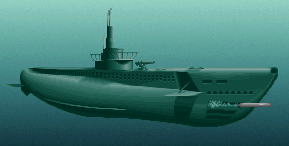![]()
For nuclear submarines
| Atomic Number: | 72 |
| Atomic Symbol: | Hf |
| Atomic Weight: | 178.49 |
| Electron Configuration: | [Xe]6s24f145d2 |

(Hafinia, Latin name for Copenhagen) Many years before its discovery in 1932 (credited to D. Coster and G. von Hevesey), Hafnium was thought to be present in various minerals and concentrations. On the basis of the Bohr theory, the new element was expected to be associated with zirconium.
It was finally identified in zircon from Norway, by means of X-ray spectroscope analysis. It was named in honor of the city in which the discovery was made. Most zirconium minerals contain 1 to 5 percent hafnium.
It was originally separated from zirconium by repeated recrystallization of the double ammonium or potassium fluorides by von Hevesey and Jantzen. Metallic hafnium was first prepared by van Arkel and deBoer by passing the vapor of the tetraiodide over a heated tungsten filament. Almost all hafnium metal now produced is made by reducing the tetrachloride with magnesium or with sodium (Kroll Process).
Hafnium is a ductile metal with a brilliant silver luster. Its properties are considerably influenced by presence of zirconium impurities. Of all the elements, zirconium and hafnium are two of the most difficult to separate. Although their chemistry is almost identical, the density of zirconium is about half of hafnium. Very pure hafnium has been produced, with zirconium being the major impurity.
Hafnium has been successfully alloyed with iron , titanium , niobium , tantalum , and other metals. Hafnium carbide is the most refractory binary composition known, and the nitride is the most refractory of all known metal nitrides (m.p. 3310C). At 700 degrees C hafnium rapidly absorbs hydrogen to form the composition HfH1.86.
Hafnium is resistant to concentrated alkalis, but at elevated temperatures reacts with oxygen, nitrogen, carbon , boron , sulfur , and silicon . Halogens react directly to form tetrahalides.
Because the element not only has a good absorption cross section for thermal neutrons (almost 600 times that of zirconium), but also excellent mechanical properties and is extremely corrosion-resistant, hafnium is used for reactor control rods. Such rods are used in nuclear submarines.
Hafnium is used in gas-filled and incandescent lamps, and is an efficient getter for scavenging oxygen and nitrogen.
Finely divided hafnium is pyrophoric and can ignite spontaneously in air. Care should be taken when machining the metal or when handling hot sponge hafnium.
Exposure to hafnium should not exceed 0.5 mg/hr. (8 hour time-weighted average - 40-hour week).
The price of the metal is in the broad range between $100/lb and $500/lb, depending on purity and quantity. The yearly demand for hafnium in the U.S. now exceeds 100,000 lb.
Sources: CRC Handbook of Chemistry and Physics and the American Chemical Society.
Last Updated: 12/19/97, CST Information Services Team